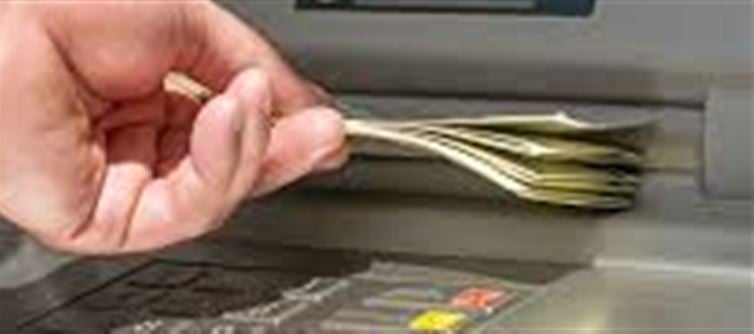
It’s a common but stressful scenario: You go to withdraw cash from an ATM, the machine processes the transaction, debits your account, but the cash doesn’t come out. Now, you're left wondering what happened to your money and how to recover it. Don’t panic! Here’s a step-by-step guide on what to do when this happens:
1. Check the Receipt and Transaction Status
Before anything else, check the transaction receipt (if available). Often, the receipt will mention whether the transaction was successful or failed. If you didn’t get a receipt, log in to your banking app or internet banking to verify the transaction status.
· Successful Transaction, No Cash: If your account shows that the amount has been debited but you didn’t receive the cash, the transaction has been processed but the machine has failed to dispense the money.
· Transaction Failed: If your account hasn’t been debited, the issue might be with the ATM itself, and the withdrawal did not go through.
2. Wait for a Few Minutes
Sometimes, the ATM might have a delay in processing the transaction. Wait for about 5-10 minutes to see if the system reverts or the amount is credited back into your account. Many banks automatically reverse the amount if there’s a technical glitch within a certain timeframe.
3. Contact the bank Immediately
If the issue persists, contact the bank immediately. Banks usually have a 24/7 customer care helpline or an emergency contact number displayed on the ATM screen or near the ATM booth. When calling, ensure you have the following details ready:
· Date and time of the transaction
· ATM location and branch
· Amount withdrawn (as per your account statement)
· ATM Receipt Number (if available)
4. File a Complaint with the Bank
If the money was debited from your account, file a formal complaint with your bank. Most banks offer online complaint filing, or you can file one through their customer service channels.
Steps to file a complaint:
· Visit the bank's official website: Most banks have an online complaint portal where you can file complaints related to ATM transactions.
· Send an email: If you're unable to access the portal, send a detailed complaint with all relevant information to the bank’s customer support email.
· In-Person Visit: If needed, you can visit the bank branch where the ATM belongs and raise the issue in person.
5. Bank’s Responsibility to Revert Funds
According to the Reserve bank of India (RBI) guidelines, banks must reimburse the customer if there is a fault with the ATM, and the amount has been debited but not dispensed. The timeline for reimbursement typically is:
· 3 to 7 working days: The bank is generally required to resolve the issue and credit the amount back into your account.
· If unresolved after 7 days: The bank must escalate the complaint to higher authorities and ensure the issue is resolved.
6. Raise a Dispute with the RBI (If Necessary)
If the bank fails to resolve the issue within the stipulated time, you can escalate the matter to the Reserve bank of India (RBI). The RBI has a dedicated Consumer Grievance Redressal System where you can lodge a formal complaint against the bank.
Here’s how:
· Visit the RBI’s online complaint portal and provide details about your issue.
· Track the progress of your complaint via the same portal.
7. File a police Report (Rare Cases)
If you suspect fraudulent activity, or if the bank does not refund your money after the prescribed time limit, you can consider filing a police report. This is typically rare, but if the situation seems suspicious, taking such action will ensure the matter is fully investigated.
Pro Tips for Avoiding ATM Cash Issues in the Future
1. Choose ATMs from Trusted Banks: Stick to ATMs that are well-maintained and from reliable banks. This reduces the chances of technical errors or machine malfunctions.
2. Check the Machine’s Condition: Look for any signs of malfunction such as error messages on the screen, a crowded machine, or damaged slots before proceeding with your transaction.
3. Keep Your Receipts: Always take a receipt after a transaction, especially if you're withdrawing large amounts. It will be a crucial proof of the transaction in case of disputes.
4. Ensure You Have a Backup: In case an ATM fails, having a backup payment method (like a mobile wallet or UPI) can help you avoid the inconvenience of not getting your cash on time.
Conclusion
Getting cash stuck in an ATM can be frustrating, but following the steps mentioned above can help you resolve the issue swiftly. Remember to keep a close eye on your transaction status, file a complaint with your bank, and use the RBI’s grievance redressal system if needed. By staying proactive and vigilant, you can ensure that your money is reimbursed without much hassle.
Disclaimer:
The views and opinions expressed in this article are those of the author and do not necessarily reflect the official policy or position of any agency, organization, employer, or company. All information provided is for general informational purposes only. While every effort has been made to ensure accuracy, we make no representations or warranties of any kind, express or implied, about the completeness, reliability, or suitability of the information contained herein. Readers are advised to verify facts and seek professional advice where necessary. Any reliance placed on such information is strictly at the reader’s own risk.
.jpg)




 click and follow Indiaherald WhatsApp channel
click and follow Indiaherald WhatsApp channel